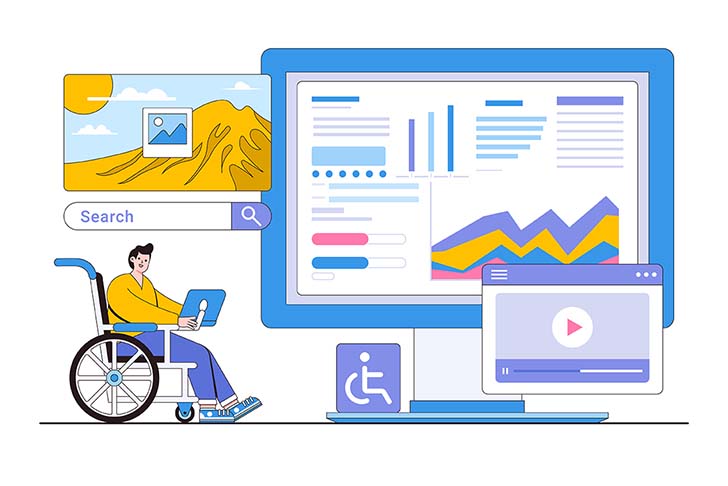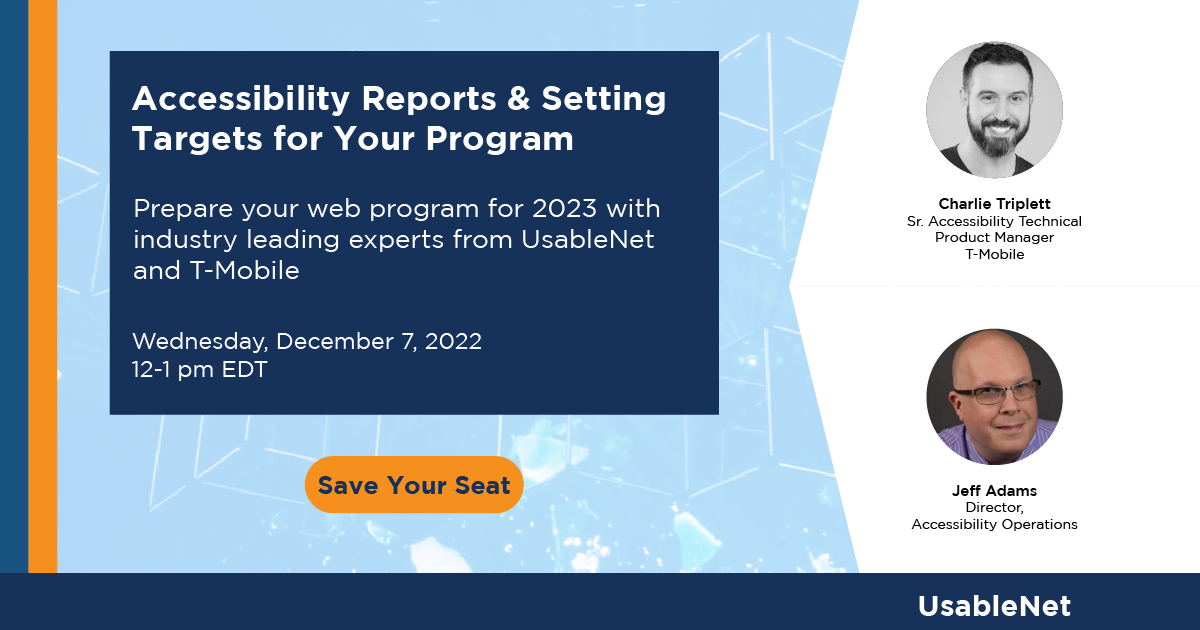Originally published on Dec 5, 2022. Content was updated in September 2023.
A complete and comprehensive accessibility program is essential for a company to offer a unified, accessible, and usable digital experience to all individuals.
Setting up a sustainable web accessibility program in your organization and making it part of your software development life cycle can seem challenging. Yet, this step is critical to managing accessibility in the short and long term. In November 2022, our accessibility experts gave a live presentation via a UsableNet webinar that covered:
• The foundational concepts for an Accessibility program
• Phase 1: Accessibility as a Project During Initial Remediation
• Phase 2: Accessibility as a Requirement
In case you missed it, this blog summarizes that presentation.
Foundational Concepts of Accessibility
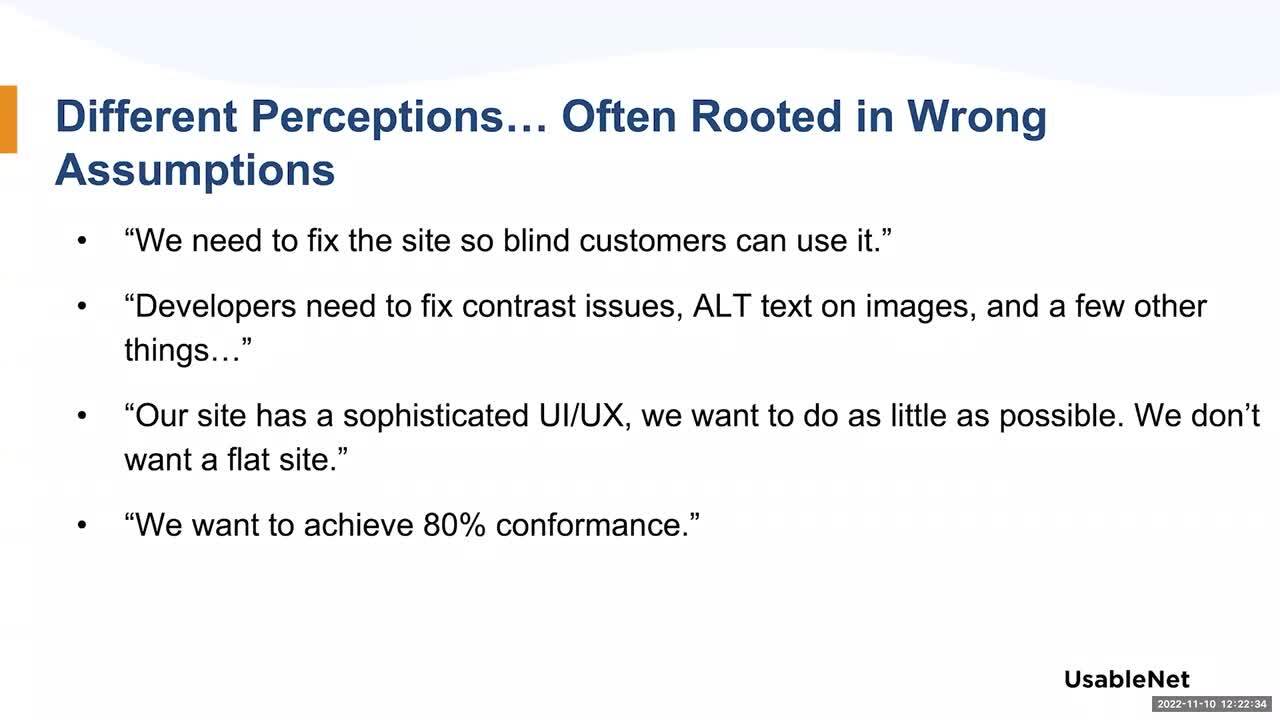
Before diving into the specifics of developing a solid accessibility program, it is vital to consider some pertinent concepts related to accessibility. Different groups look at accessibility through different lenses. For example, designers may think accessibility and usability are synonymous. The reasoning for this assumption is that if something is accessible, then people with a wide range of capability levels can use it. In contrast, developers may look at the web content accessibility guidelines (WCAG) as a checklist. Through this lens, a website is accessible if it meets a list of criteria.
Another essential point is that, ideally, accessibility should never be an afterthought or add-on to a website. Accessibility works best when "baked-in" as if it were any other site feature. Just like dynamic design, search engine optimization, and interactive navigation have become web development standards, site owners should give accessibility and usability the same level of importance.
Meanings of Accessibility
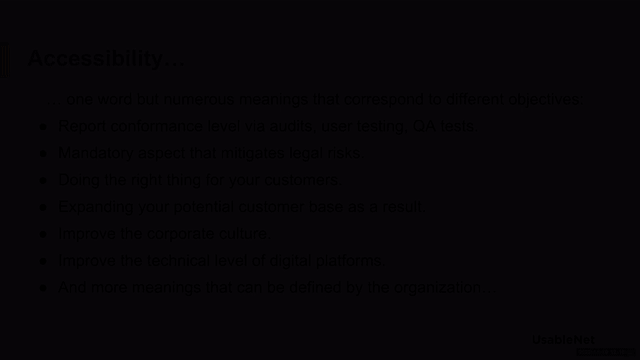
Accessibility can mean a variety of different things to different companies. Some companies view accessibility as a required undertaking to guard against negative legal ramifications such as lawsuits. Others look at accessibility as a responsibility to customers that will keep existing clients happy and hopefully draw in new ones. Accessibility can help an organization improve its corporate environment and increase the technical level of digital material.
Accessibility Goals

A specific company's meaning of accessibility usually helps to shape that company's accessibility goals. For example, a company driven by the desire to avoid legal action may not be as thorough in user testing because its primary goal is to bring the website or app into compliance with accessibility standards. In contrast, a company that wants to do the right thing for its customers may focus on making digital material as accessible as possible by learning from past mistakes and implementing relevant solutions. No matter a company's goals and objectives regarding accessibility, the approach must be unified and consistent for the efforts to be effective.
Dispelling Myths about Web Accessibility
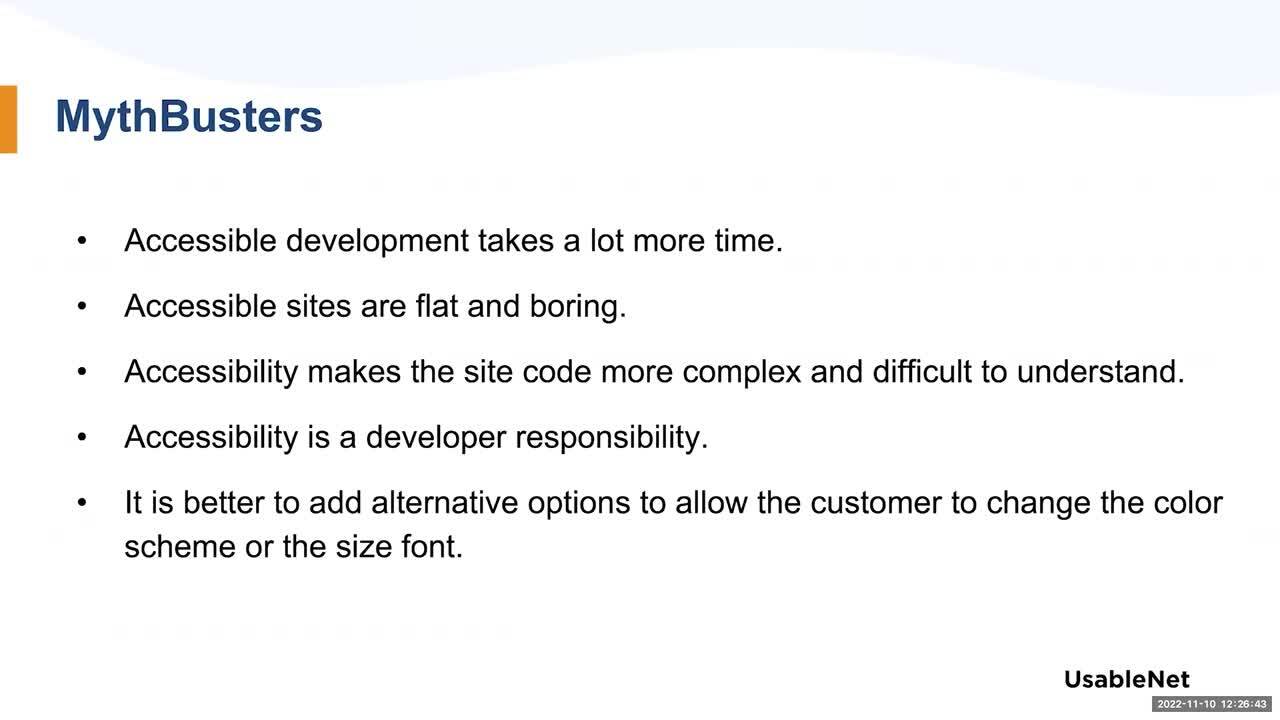
Myth: Designing an accessible website takes much more time
Myth busted: If the right accessibility program is in place, developing an accessible website should not take much extra time. Accessibility doesn't take "extra time" when it is part of the early stages of development and not added retroactively.
Myth: Accessible sites must have a boring design
Myth busted: Visually pleasing, fun, and interactive sites can still be accessible with the right tools and procedures.
Myth: Accessibility is solely the responsibility of web developers
Myth busted: Accessibility should be a company-wide initiative with all departments on board, combining the efforts of developers, programmers, human resources employees, company executives, designers, and usability testers.
Beginning the Accessibility Program
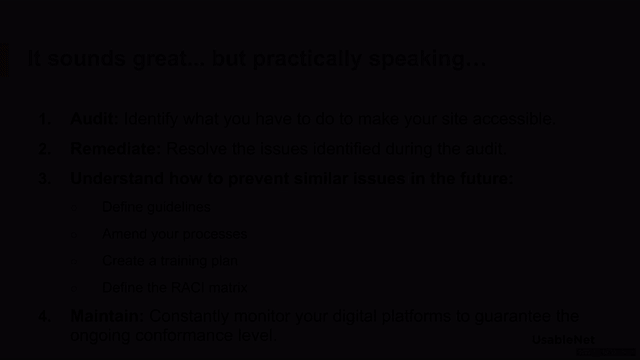
To start, a company must define accessibility objectives and circulate them throughout the company. While determining what is needed to achieve these objectives, the company should collect necessary technical knowledge, develop and conduct relevant employee training courses, make accessibility an integral part of the software development life cycle, and gather and repurpose financial resources for the accessibility initiative.
Specific steps:
1. Audit: Take stock of the state of the site's current accessibility and determine what must be fixed.
2. Remediate: Fix the problems discovered during the audit.
3. Explore options for preventing resolved issues from reappearing.
4. Perform routine maintenance to ensure that the site or app continues to comply with accessibility guidelines.
Phase 1: Accessibility as a Project

In phase 1, accessibility is a project with the primary goal of fixing issues identified during the audit. In this process, it is essential to review the audit results, determine a plan of action, implement the solutions, test for successful remediation, and deploy the results onto the actual site. This process should involve all company departments and may include an external accessibility partner.
One thing to remember here is the concept of progress over perfection. The accessibility audit may turn up thousands of issues. It is vital to keep moving along to try to fix as many problems as possible. Following this process will increase overall perfection and conformance levels. In addition, you'll want to prioritize issues that dramatically impact the user experience during the remediation process. As you fix accessibility problems, you will also find ways to prevent the remediated issues from reappearing.
Phase 2: Accessibility as a Requirement
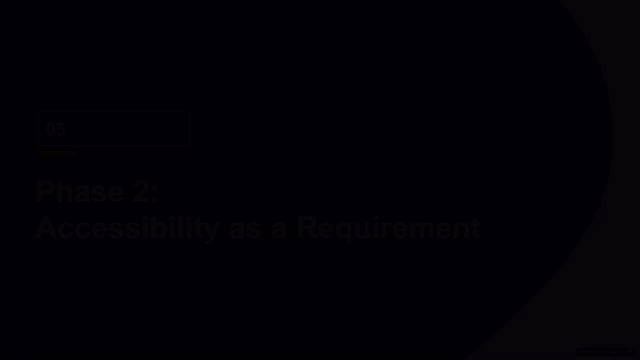
Accessibility as a requirement focuses on design that complies with standards set forth by the WCAG. For example, a company that does not comply with relevant guidelines may face legal action. For proper conformance, you'll want to include automated accessibility scans, manual testing, and gathering user experience from people with disabilities.
Takeaways
The following steps should bring everything together by giving you a clear path from the beginning to how to develop and maintain a company-wide approach to accessibility.
1. Work with an external accessibility partner that can guide a company by providing automated scans, manual testing, and remediation solutions.
2. Train all departments of the company in new accessibility practices.
3. Help different departments develop skills related to accessibility.
4. Ensure that internal communication embraces and spreads awareness about accessibility throughout the company.
5. Promote a company-wide accessibility culture.
6. Use technology as a resource to further accessibility and usability initiatives.
With the proper accessibility program in place, any company should be well on its way to offering a unified, accessible, and usable technological experience for individuals of all ability levels.
Want more? If you liked this webinar and recap, Watch out webinar, Accessibility Reports & Setting Targets for your Program. You'll learn how to give leadership the information that connects to action. Save your seat for this free on -demand webinar now!

